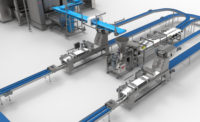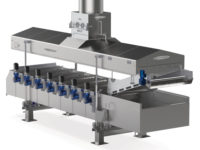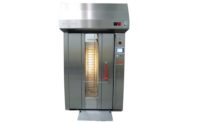The bottom line
- The benefits of oven automation include increased efficiency and safety
- The technology can help mitigate the effects of labor shortages
- Humans will still be needed in production environments
Snack food and wholesale bakery companies had been steadily adding automation to their plants and equipment contained therein for a number of years—and then the pandemic hit, accelerating the process due to both the difficulty in finding qualified people to hire, and the need for social distancing that accompanied at least the early stages of COVID-19. Ovens, proofers, and associated equipment have been among the candidates for automation.
And even with the pandemic in the rearview mirror, hiring challenges continue to some degree, and other benefits of automation like improved productivity, consistency, and safety remain compelling. “They need to automate at different stages of the bakery,” says Raymond Nogael, marketing and business development vice president at TMG, Nantes, France, parent company of Mecatherm. “They need to automate because it brings many benefits.”
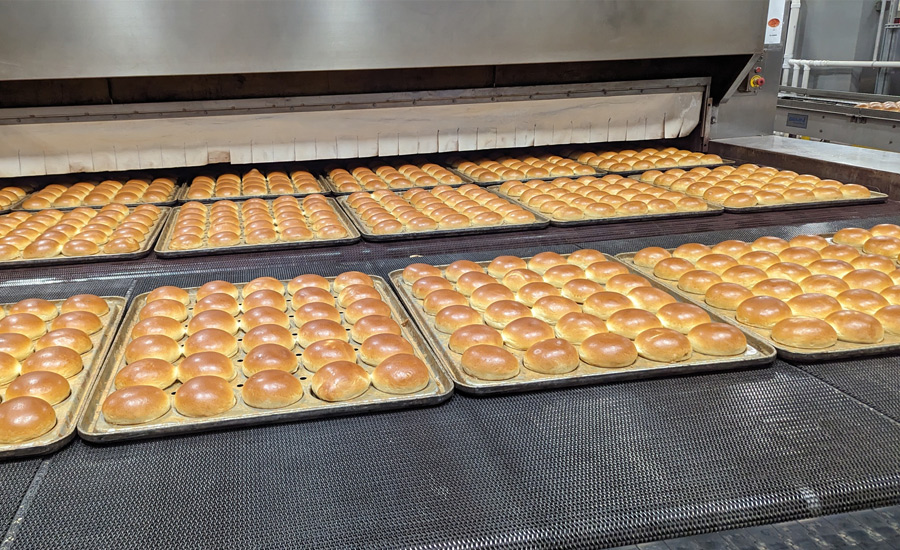
Among those are productivity and consistency, Nogael says. “If you go out to the proofer, and you put all your stuff on the rack—and then you need to go to the oven—some people will take more time than others,” he says. “Some people will wait a few minutes. And then you will not have the same quality, and you will not have consistency.”
Other reasons include greater safety and reduced labor costs, Nogael says. “I was talking to a customer, and I told him [automation] is going to replace three people,” he says. “He said, ‘I don’t want to replace people—I don’t have these people. I have no choice.’ Automation can be easily integrated to best match any needs. Manual work will still be replaced more and more by automation.”
TMG and Mecatherm have noticed increasing customer demand for full automation, not only due to the lack of qualified personnel but because they simultaneously want to boost capacity, quality and speed, Nogael says. “Specific customers, who have a high capacity for investment, are where we can see the most automation,” he says.
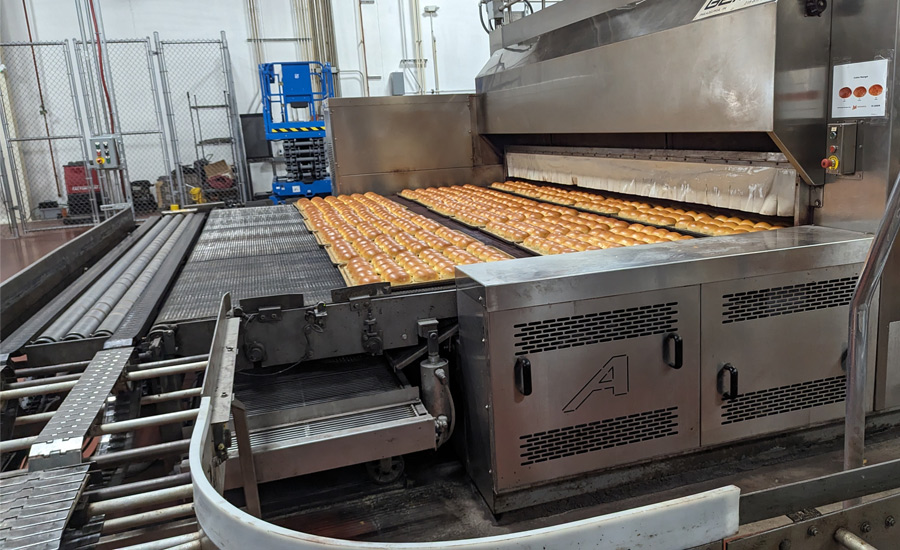
This typically starts with packaging, which otherwise requires the most people to do labor-intensive, “not very exciting” work that can be painful by the end of a long day, Nogael says. Moving product from rack to rack is another common area for automation, as is robotization to customize production. “It’s for packaging, or for some point on the line where you want to change from one conveyor to another,” he says. “Or when you want to reduce waste management and remove bad product. What is the value to have three, four, five people just to do that?”
AMF Bakery Systems has added automation to its ovens, proofers, and associated equipment for a number of reasons, says Dennis Kauffman, executive product manager. For starters, either separately or in combination with the company’s Sustainable Oven Service (see product gallery), automation helps to monitor pan vibration to enable predictive, preventative maintenance.
“We’re counting the number of cycles that a particular piece of equipment has made, and comparing that to the manufacturer’s expected life, to be able to say, ‘That’s approaching 90% of its lifespan, you might want to buy a new one and change it out,’ ” he says. “Along with that, we have training videos that show, if you are going to replace this bearing, here’s the procedure, and the tools, how much time and how many people it will take to do that job. Bakeries tend to have high turnover in the maintenance department, so they can let inexperienced people who have never done that job look at the video first.”
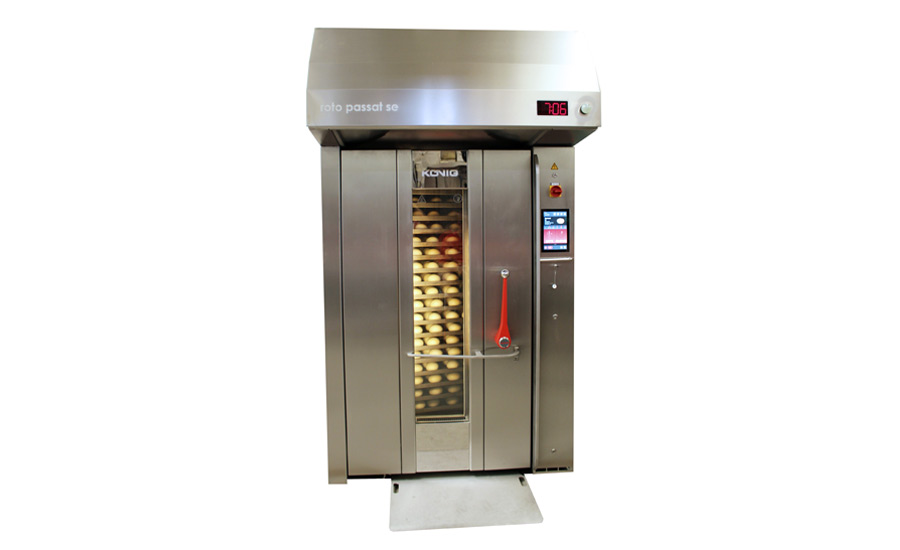
The company’s cooling conveyors, which Kauffman describes as “really just a proofer with a different grid,” offer the same set of automated functions, including vibration analysis, lifecycle analysis, and the instructional videos to enable preventive, predictive maintenance, he adds.
Beyond that, Kauffman says, “it’s just controls, controls, controls,” which process more and more information as they add capacity and sophistication. “If the same alarm occurred three times in a day, that’s a problem,” he says. Through the sustainable oven service, “they send us information, we monitor that information, and then through AI, we send them a recommendation that says, ‘Hey guys, your operator says you’ve restarted that machine three times. There’s something wrong with that machine. If you think it’s going to run third shift, it might not.’ ”
Another area related to ovens and proofers that AMF Bakery Systems has gotten into is dual-fuel ovens, Kauffman says. In Europe, that typically amounts to ovens that run on both natural gas and liquefied petroleum gas (LPG), and snack and bakery manufacturers that can’t get one of those gases can usually find the other, he says. In the rest of the world, prompted by regulations in California and New York, it’s usually a combination of natural gas and electric. Kauffman is skeptical the grid will support enough power for bakeries to run their ovens all-electric, although he notes that the California regulations, which take effect in 2027, provides “a pass until the power company can bring you the power,” he says.
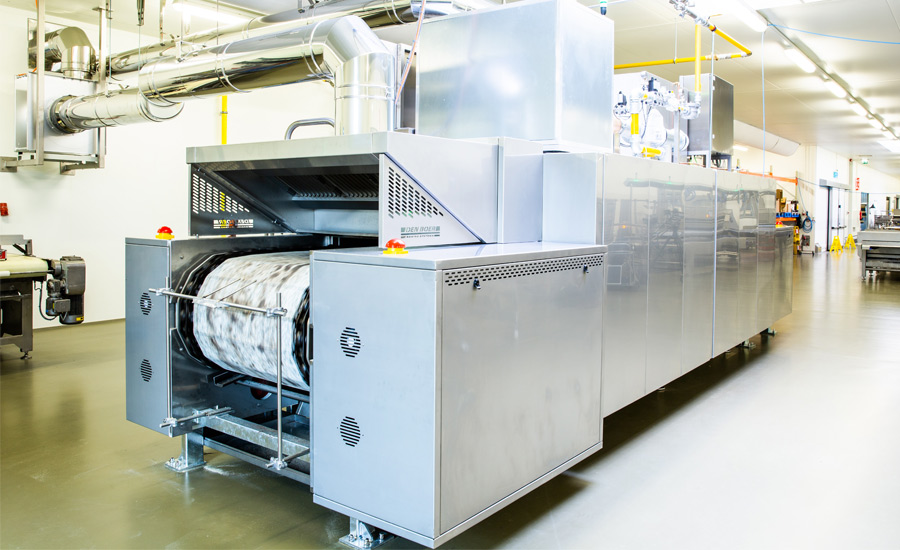
Full automation has been a reality for most customers of Radio Frequency Co., for a number of years because the company’s heating, drying, curing, and pasteurization equipment is higher-end and goes into massive operations like those of Pepperidge Farm and Kellogg’s, says Lisa Mitchell, vice president of marketing.
“There’s already not a lot of hands-on oven work,” she says. “All the equipment we go onto is mostly conveyorized. Most of them are already geared to talk to the same controllers that the ovens do. Our equipment is geared toward being highly automated.” Some customers talk about the use of AI, she adds, but “I have no idea where that’s going to go. … I’m not sure we’re at the point where I can stay home and send my robot to work for me.”
Customers of Radio Frequency are mostly looking for increased efficiency in their ovens, and in the past year, there have been “more inquiries from companies looking to be more green—the European people say, ‘decarbonization’—to replace gas ovens,” Mitchell says. “I don’t think we will ever replace conventional ovens for baking, but adding an RF dryer to an oven line can decrease the dependency on gas-fired ovens.”
She adds, “It’s going to be, a tough course, much like with EV cars, to switch over from gas- or coal-fired ovens, or any of the traditional carbon-type equipment for baking, over to electric. I don’t think Radio Frequency is necessarily a way to replace an oven, but it can certainly improve the efficiencies, or reduce the dependency of a particular line on carbon methods.”

